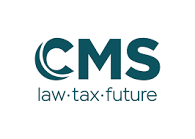The Markets in Crypto-Assets Regulation (MiCAR) sets down a harmonized regulatory framework for crypto-assets. MiCAR’s overarching goal is to extend regulatory oversight to those categories of cryptos and tokens that have so far remained outside the scope of regulation. The following focuses specifically on non-fungible tokens (NFTs) and examines whether they are covered by MiCAR.
What are NFTs?
NFTs are cryptographic records stored on a blockchain that are unique in that they are linked to a specific asset. They primarily serve as the electronic “embodiment” of mainly digital, but also physical art. NFTs provide technical benefits for the digital economy: they can take on the function of digital certificates of authenticity for electronic works, which can possibly prevent legal disputes about the granting of rights of use.
NFTs have experienced a rapid boom in the digital economy, even for the crypto world. The most successful projects worldwide include Bored Ape Yacht Club, CryptoPunks and CryptoKitties.
NFTs under MiCAR
MiCAR explicitly excludes crypto-assets that are unique and not fungible from its scope. This means that most NFTs (for example those that are unique and non-fungible, such as digital art and collectibles) are not regulated by MiCAR.
Even though NFTs might be traded in a marketplace and accumulated speculatively, NFTs are not readily interchangeable and the relative value of an NFT in relation to another cannot be ascertained by comparison to an existing market or equivalent asset. This is because NFTs are unique. The value of NTFs is attributable to each token’s unique characteristics and the utility it gives to the token holder. Such characteristics limit the extent to which NFTs can be used financially, thereby reducing risks to holders and the financial system.
MiCAR may apply to the issuer of the NFT and the platform where the NFT is traded if an NFT has characteristics that make it similar to an asset-referenced token, electronic money tokens or a crypto-asset other than asset-referenced tokens and e-money tokens (mainly utility tokens).
For example, NFTs issued in large series or as a collection could be considered fungible and therefore may be subject to MiCAR (ie fractional NFTs). MiCAR is intended to apply to crypto-assets that may appear to be unique and non-fungible, but whose actual characteristics or associated use would make them either fungible or non-unique.
Thus, it is not the label or designation of a crypto-asset but rather the values and rights it embodies that decide whether an NFT falls under MiCAR. Crypto and blockchain businesses that operate in the NFT space should carefully assess the characteristics of their NFTs on a case-by-case basis.
Other financial regulations
The exemption under MiCAR for specific NFTs is limited only to the scope of MiCAR and does not affect the implementation of other financial regulations within the EU. NFTs meeting the eligibility criteria for classification as financial instruments in accordance with the directive on markets in financial instruments (MiFID II), which includes transferable securities and financial derivatives, fall within the scope of MiFID II and the relevant EU securities regulations.
In addition, if NFTs meet the criteria for classification as electronic money or payment services as defined by the electronic money directive or the payment services directive, they are bound by the regulatory frameworks applicable to these domains.
Drawing conclusions
The predominant nature of NFTs as unique and non-fungible assets places them outside the primary scope of MiCAR. As a result, most NFTs, particularly those relating to digital art and collectibles, are not regulated by MiCAR.
However, NFTs issued in substantial series or as part of collections may potentially trigger MiCAR oversight. Issuers of NFTs and trading platforms where NFTs are traded should carefully assess the characteristics of the NFT in order to ascertain its unique and non-fungible status, thereby ensuring compliance with the applicable regulatory framework.
Authors are CMS: Klaus Pateter, Mathias Huber, Clair Wermers, Karsten Bruinsma, Kilian Rowel and Katalin Horvath, or contact by email to crypto@cmslegal.com. CMS.














